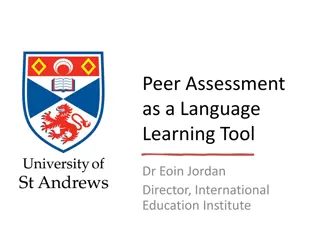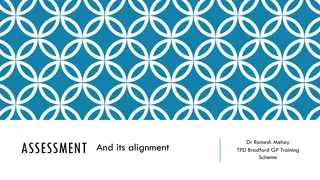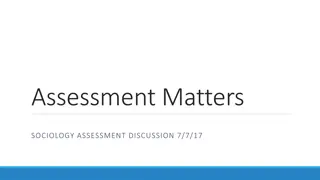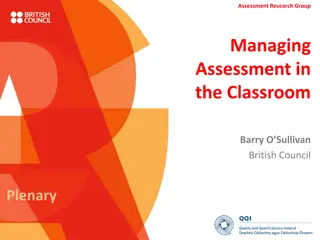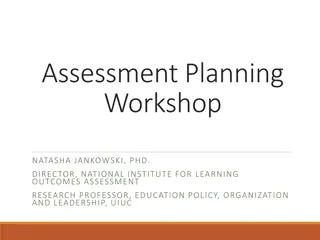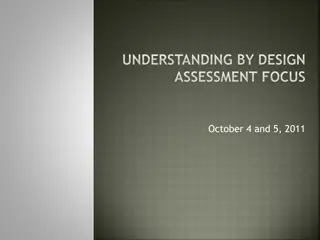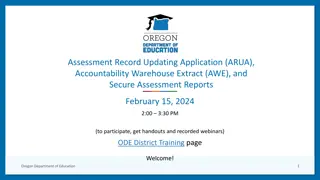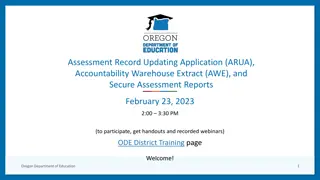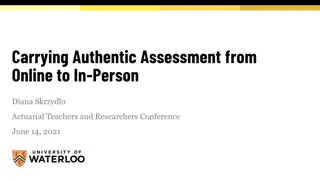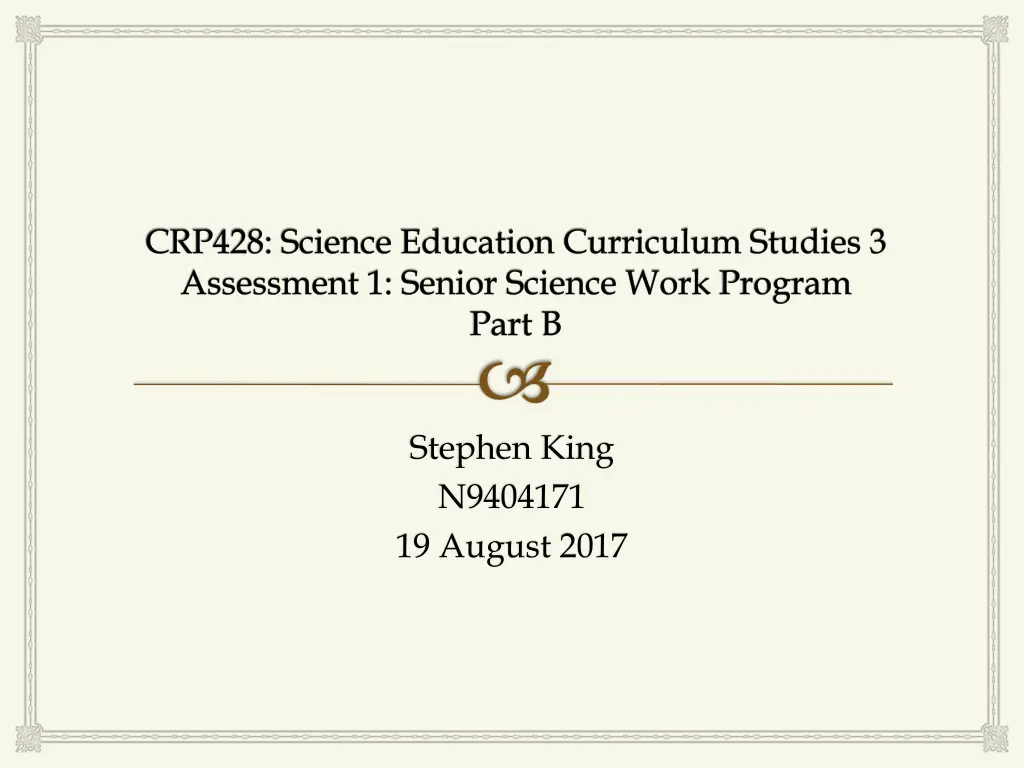
Senior Science Work Program at Mt. Ribot High: Context-Based Learning Approach
Explore the implementation of a senior chemistry work program at Mt. Ribot High, focusing on context-based learning to address declining interest in science and mathematics courses. The program aims to engage students through practical activities and real-life relevance, supported by a structured curriculum and evaluation plan. Discover how situational analysis of the school and community informs the program design, with a continuous cycle of curriculum planning based on the Ralph Tyler model.
Download Presentation

Please find below an Image/Link to download the presentation.
The content on the website is provided AS IS for your information and personal use only. It may not be sold, licensed, or shared on other websites without obtaining consent from the author. If you encounter any issues during the download, it is possible that the publisher has removed the file from their server.
You are allowed to download the files provided on this website for personal or commercial use, subject to the condition that they are used lawfully. All files are the property of their respective owners.
The content on the website is provided AS IS for your information and personal use only. It may not be sold, licensed, or shared on other websites without obtaining consent from the author.
E N D
Presentation Transcript
CRP428: Science Education Curriculum Studies 3 Assessment 1: Senior Science Work Program Part B Stephen King N9404171 19 August 2017
Content 1. Work program overview. 2. How context-based learning principles were incorporated into the work program. 3. How the situational analysis of the Mt. Ribot High school and community has informed the program. 4. The work program evaluation plan. 5. Reflections on the planning experience.
Work program justification Participation in science and mathematics courses by Australian Yr. 12 students (with the exception of entry maths) has been declining in real terms for the greater part of 2 decades to 2012. Kennedy, J.; Lyons, T.; Quinn, F. (2014) . Reasons for the decline in uptake of science and maths subjects particularly amongst girls in Australian schools: Personal relevance, don t see themselves as scientists Not interested Perceived as difficult There is a need to improve the way we teach chemistry in schools so that students are more engaged and see the relevance of the science through more real-life practical activities. King, Donna T. (2007) The Mt. Ribot senior chemistry work program is designed to engage students through a context based approach. Concerns about context based courses are whether they lay a good foundation for further study. Plus increased work demand on teachers and students. King, Donna T (2007)
Work program overview The work program has been developed for Mt. Ribot High Years 11 and 12 based on the QSA 2014 Queensland Senior Chemistry Syllabus requirements. The work program contains 8 units of work, 2 units per semester and time required for each unit. 6 units are context based. For each unit, a general objective has been developed, key concepts, key ideas and contextual learning experiences have been mapped to the syllabus. Assessment category, criteria assessed and conditions for each assessment instrument Sequence units so that basic concepts are taught in Unit 1, Yr. 11 then build on knowledge referring to previous units as students move through into Yr. 12. I ve chosen the Ralph Tyler model as a guide to develop the work program. Tyler emphasizes the fact that curriculum planning is a continuous cyclical process, involving constant replanning, redevelopment, and reappraisal. Wang, V.C.X., Parker, J. (2011)
Context based learning Context based learning aids in student motivation. If students can see the point of what they re studying , they will engage in the materials and are likely to learn more effectively. Bennett, J. , Holman, J. (2003) Contexts developed for a wide variety of students. Do this by making units relatable to the students everyday lives. Used the 4 elements context earth, wind, fire and water in the Unit titles for most units to engage students and connect concepts in the classroom to the out of school world. Unit #2 Earth. From Rocks to Heavy (and Light) Metals (Mining & Minerals Processing Context). Mt Ribot is a large provincial city with mines found further west of the district. Unit #3 Earth. So what in earth do Chemists and Chemical Engineers do? (Agricultural, Fertiliser and Environmental Context). Mt Ribot has a substantial industry based on the production of fertilizers, and explosives for the local agriculture industry. Unit #4 Wind and Fire. From leisurely travel to fast cars (Transportation fuels, and motor sports context). Transportation is a very familiar context for all students. Unit #5 Water. Chemistry under the sea (Marine sciences and corrosion context). Engage students who have an interest in the sea, water sports, sea life, sea wrecks. Unit #6 Organic, Chemistry. From oil to polymers, plastics and lycra (Sports equipment materials context). Engage students who have an interest in sports, sports equipment and sports clothing. Unit #7 The Chemistry of Life (Medical Laboratory Context). As the city has a problem with high crime rates and drug abuse, students and parents may become highly engaged in the context of pharmaceuticals and drugs and the effect on the body.
Situational Analysis First decide what the purpose of the program is. For example, a government initiative to increase student retention and uptake of science subjects in senior years, improve science results and increase the number of students studying a science related field at University. Where is the school now and where does it want to be? Murray Print (1993) Are there particular target areas that need to be addressed e.g. literacy, numeracy? Needs analysis. Large, high achieving school so emphasis on high performance while making sure no students are left behind, cater for students where English is an additional language. Consider student cohort, school and local community profile, needs, resources, abilities and interests. Equal male/female ratio. Identify gaps between current situation and target goals. Address gaps in the work program.
Evaluation Plan 3 key questions in designing the evaluation program 1. Who are the stakeholders? 2. What resources are required? 3. Evidence of success of the program? Gather evidence about the effectiveness of the work program Use surveys of students, teachers, parents and industry reps where field trips occurred. Ensure a good spread of student responses, make feedback forms compulsory. Act immediately on identified problems Report and make recommendations about the effectiveness of the program. Consider time and resources for data gathering, determining if the data is reliable and can be used, data analysis, interpretation and report writing.
Reflections on planning Planning was difficult at first. Hard to map syllabus to contexts. Lots of iterations. Normally start with an existing program and modify it, attach cover note. Use Curriculum Assessment and Reporting Framework document as a guide. As well as a justification, program change needs a champion , either principal or science subject master. Both must be fully on board . Review and approval process required. EEIs, 6 contextual units and field excursions require lots of time and resources - unrealistic. Balancing act, multiple constraints. Factors outside of control. Requires careful planning and mitigation.
References The Continuing Decline of Science and Mathematics Enrolments in Australian High Schools. Kennedy, J.; Lyons, T.; Quinn, F; Teaching Science pp 34-46, Vol. 60, No.2, June 2014. King, Donna T (2007) Teacher beliefs and constraints in implementing a context based approach in chemistry. Teaching Science: The Journal of the Australian Science Teachers Association 53(1):pp. 14-18. QSA 2014 Queensland Senior Chemistry Syllabus https://www.qcaa.qld.edu.au/senior/subjects/sciences/chemistry-2007 Educational Leadership and Ralph Tyler , Wang, V.C.X., Parker, J., International Journal of Adult Vocational Education and Technology, 2(3), 48-59, July-September 2011 Chapter Eight: Context-based Approaches to the Teaching of Chemistry: What Are They and What Are Their Effects? Bennett, J. ; Holman, J.; pp. 165 184. Chemical education; towards research-based practice (2003), Kluwer Academic Publishers Situational Analysis, pp. 109 120, Print, M., Curriculum development and design, 2nd ed. (1993), Allen & Unwin Qld Curriculum, Dept of Education & Training P-12 Curriculum Assessment and Reporting Framework document from http://education.qld.gov.au/curriculum/framework/p-12/



